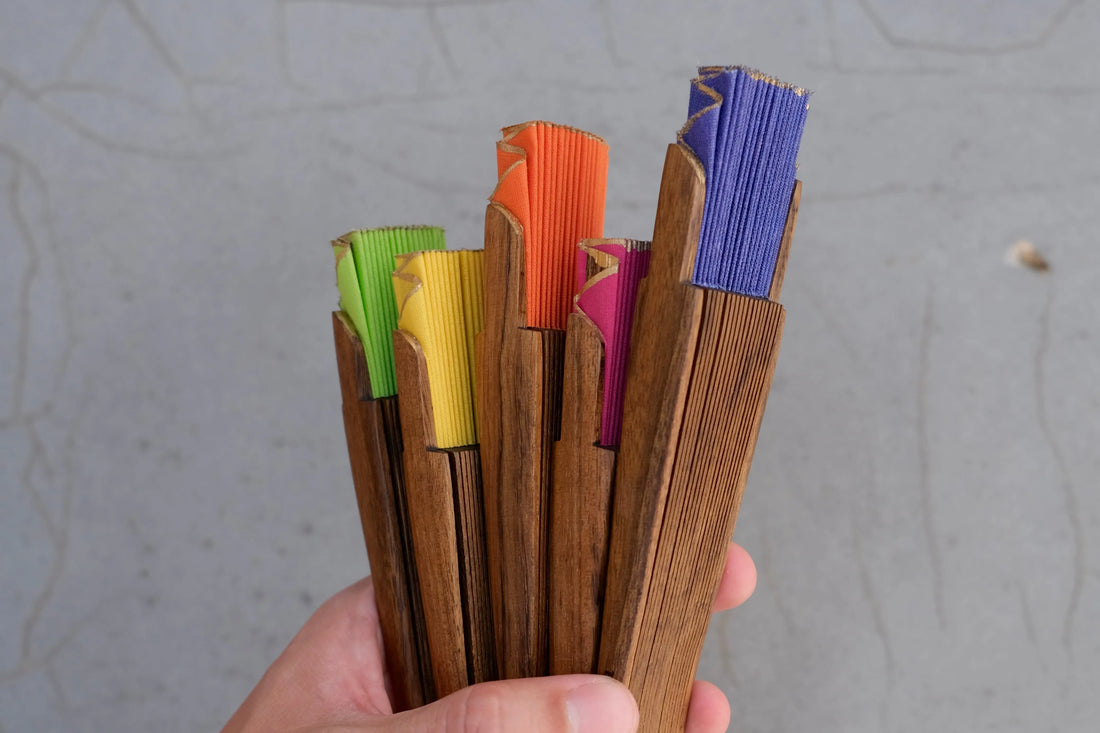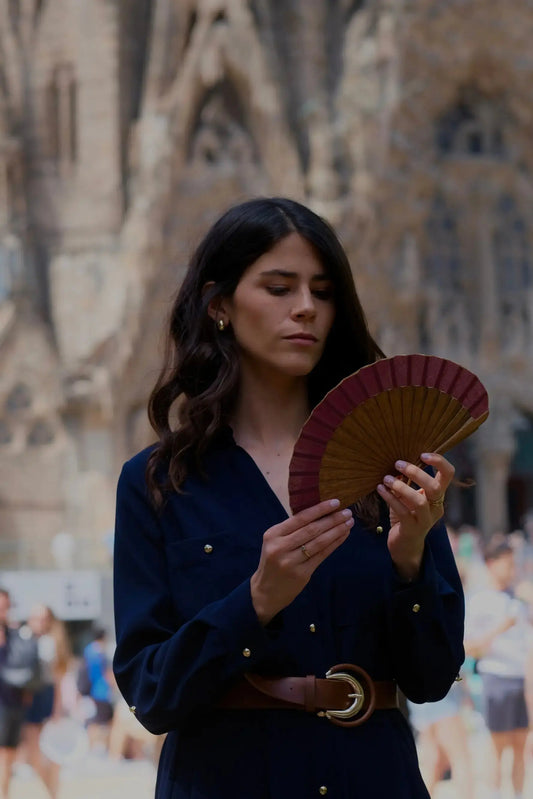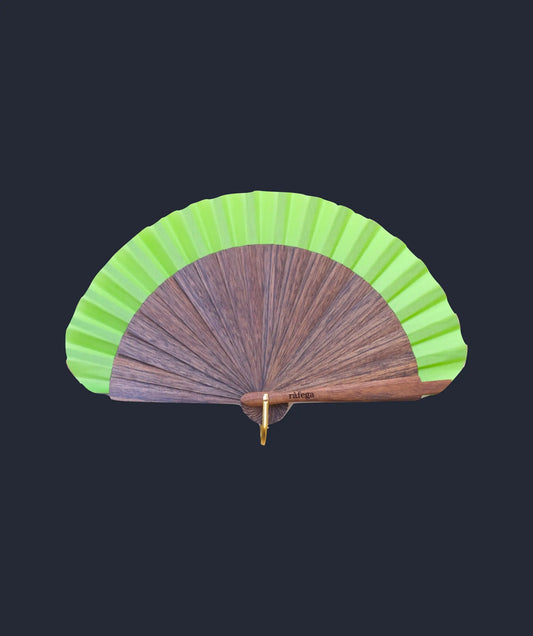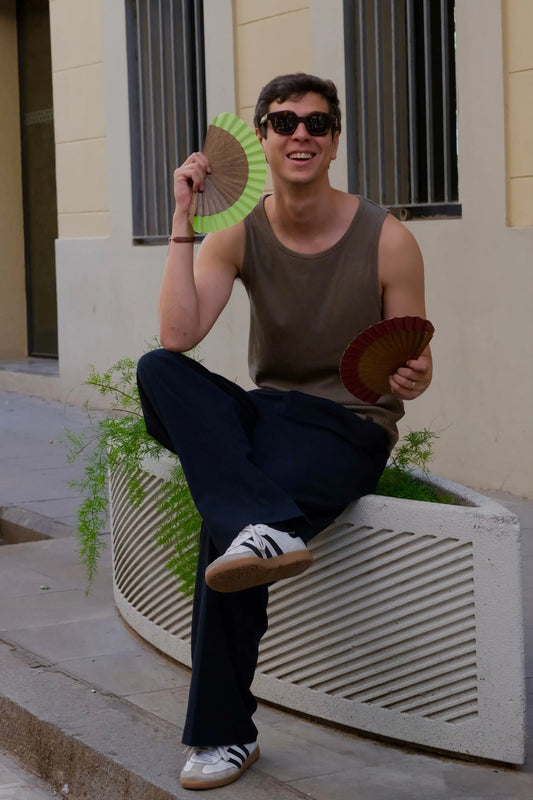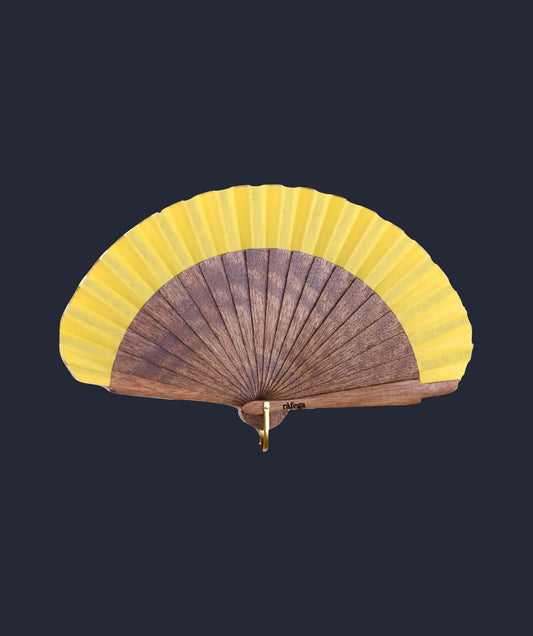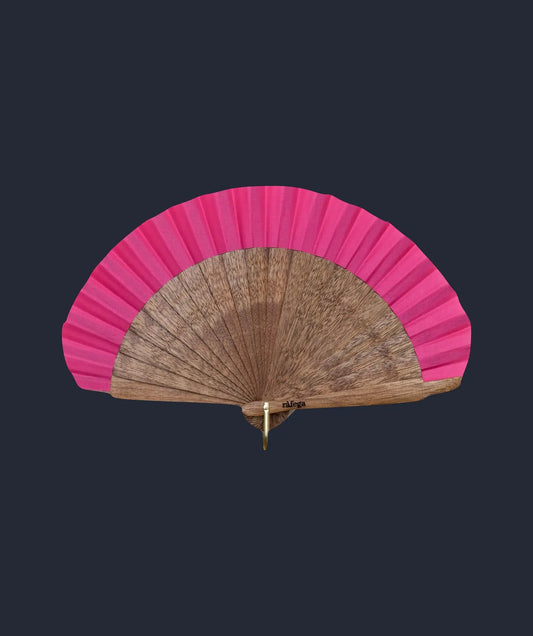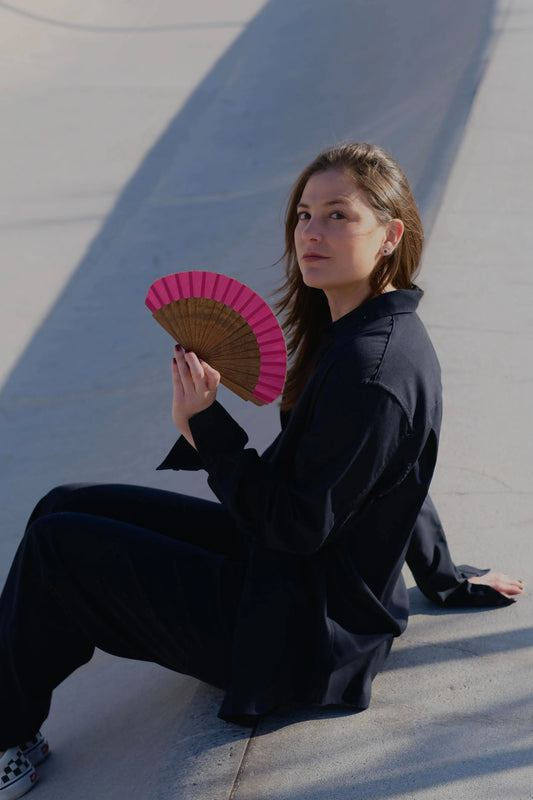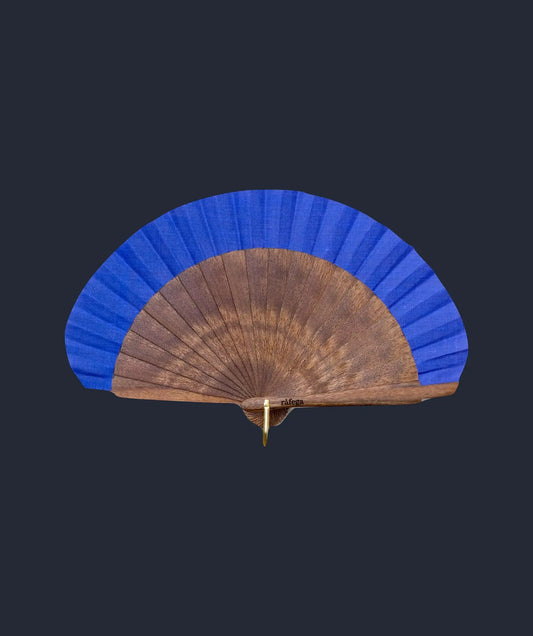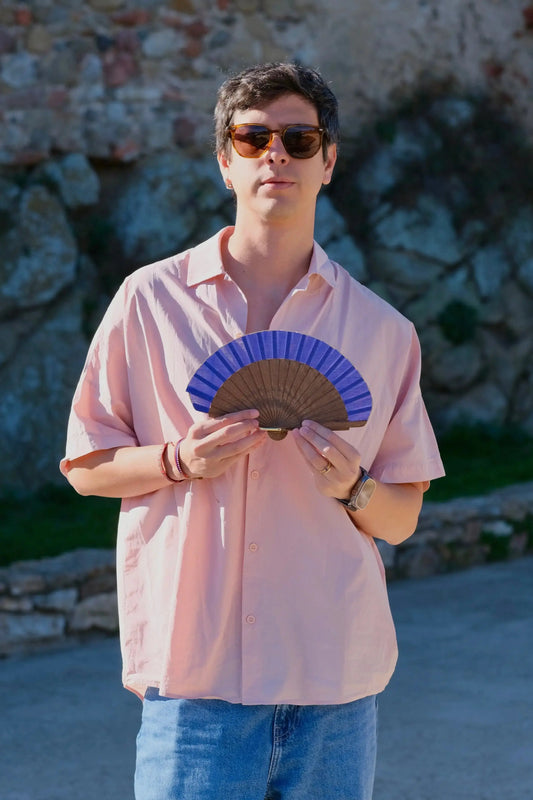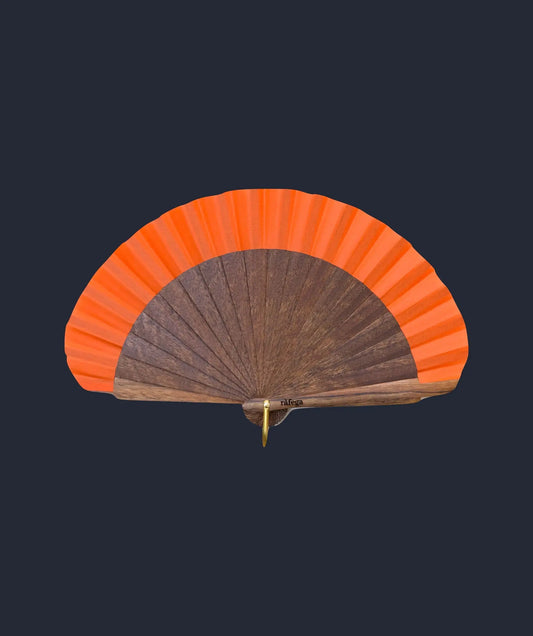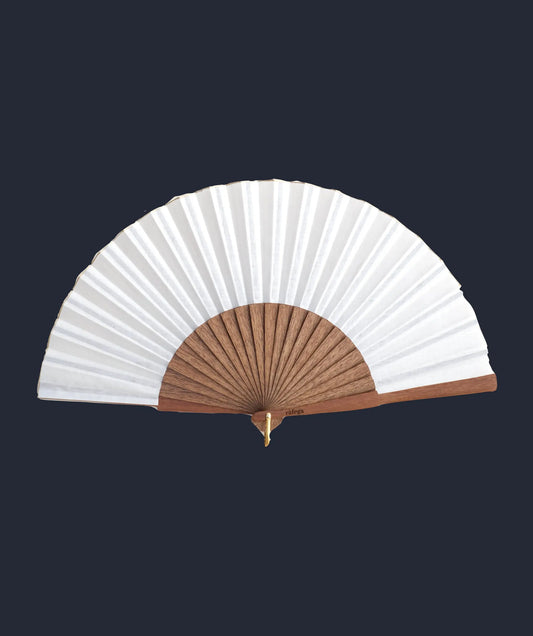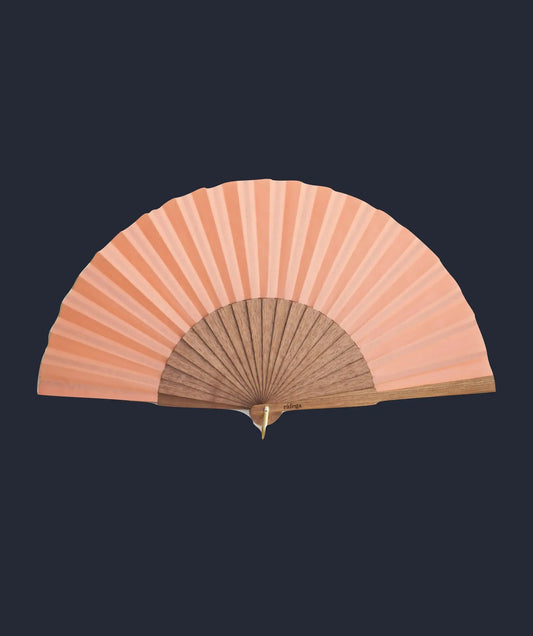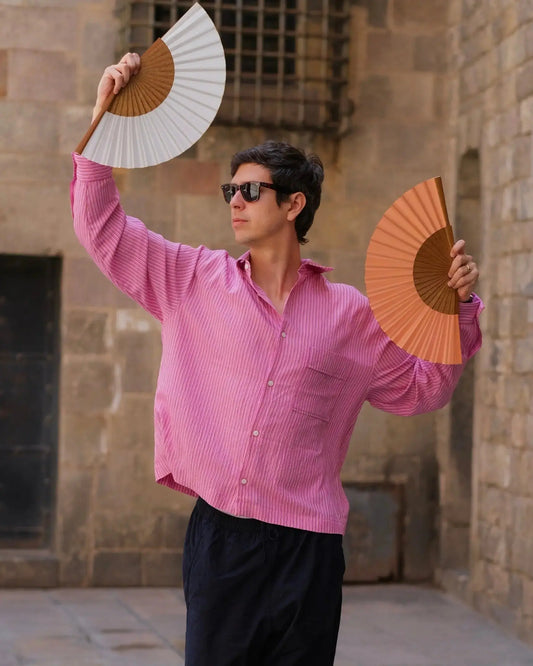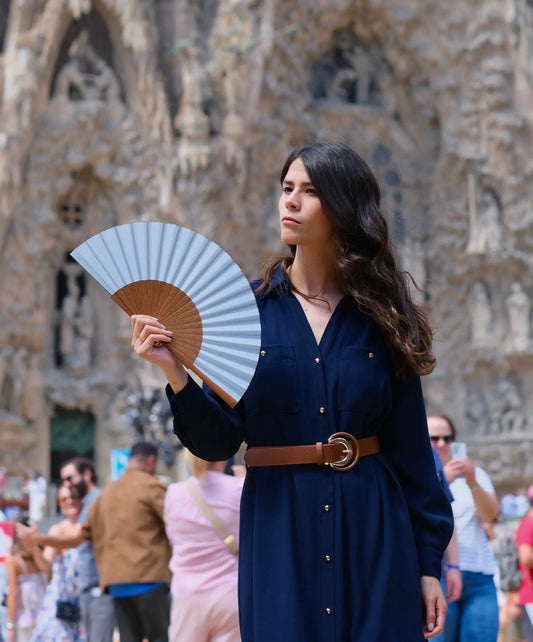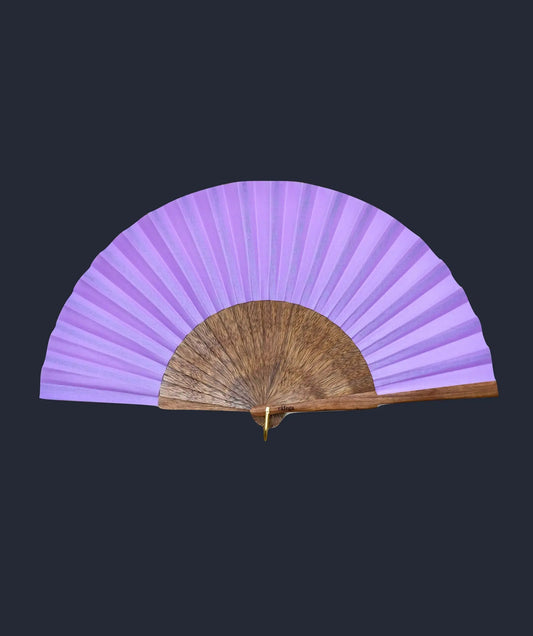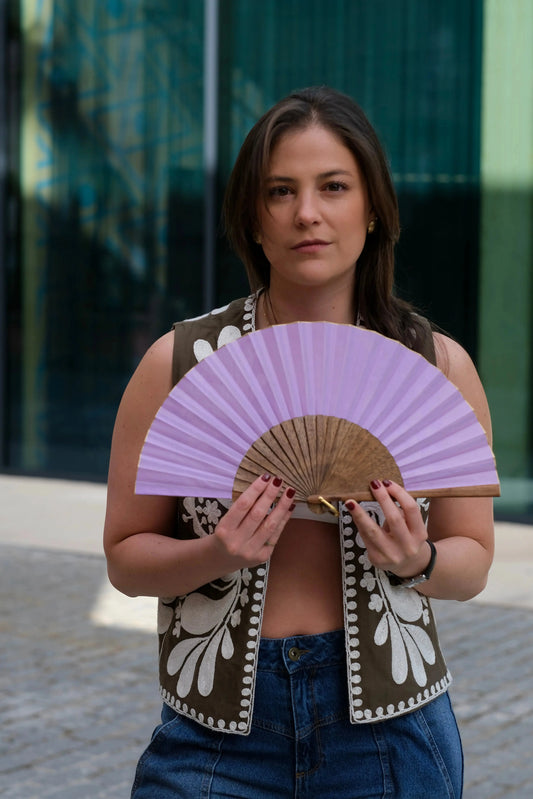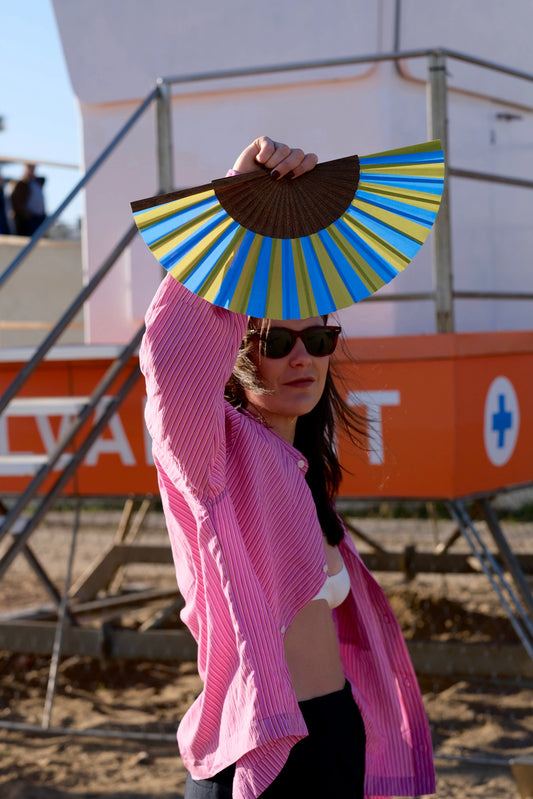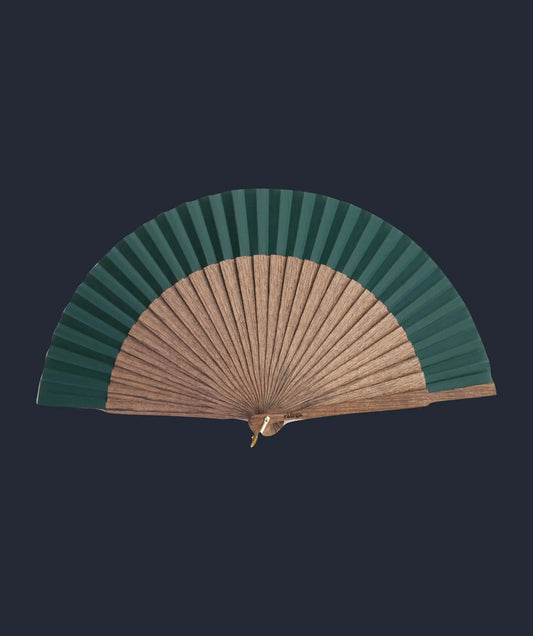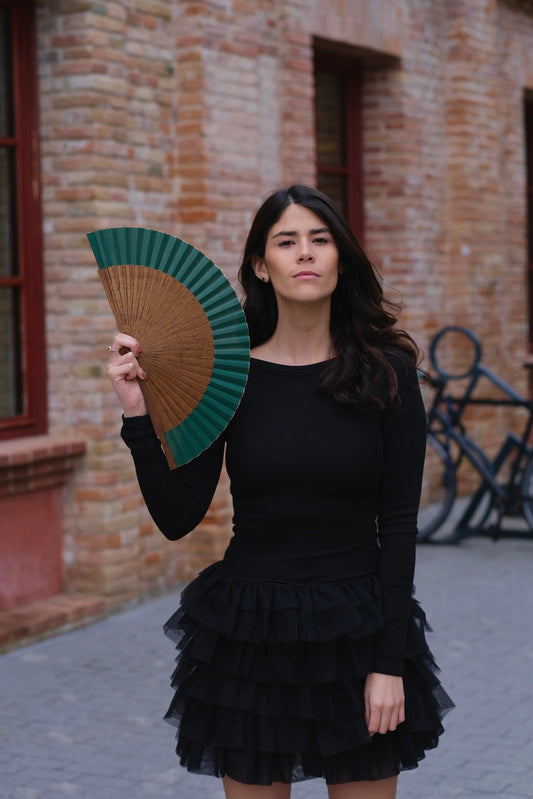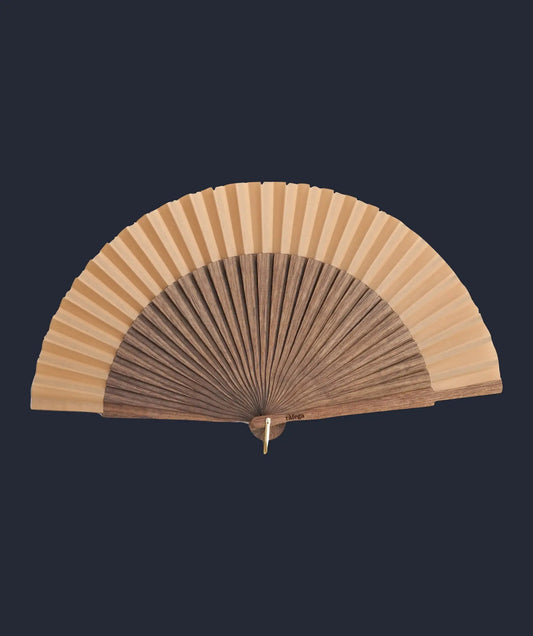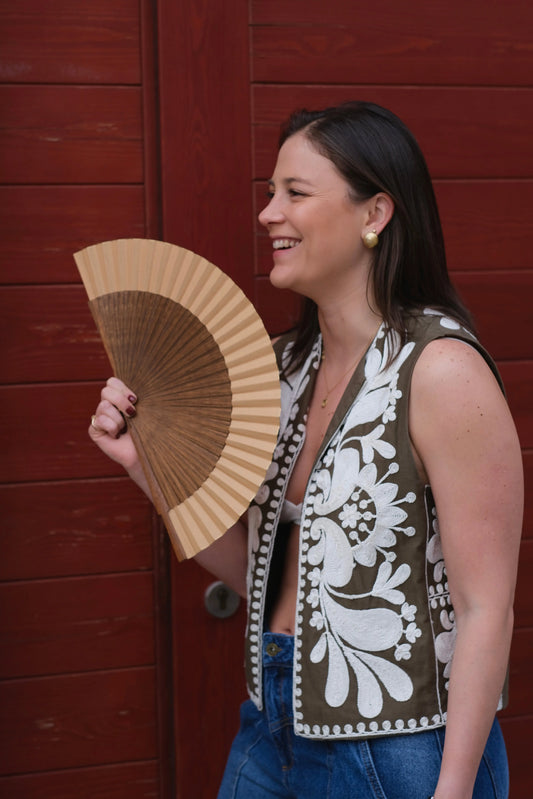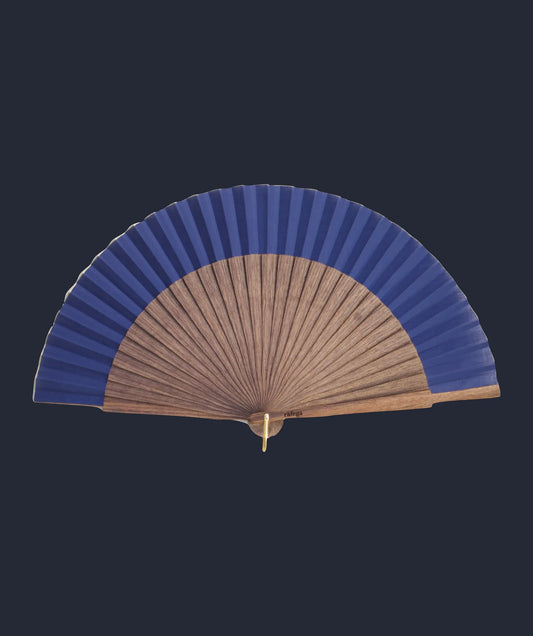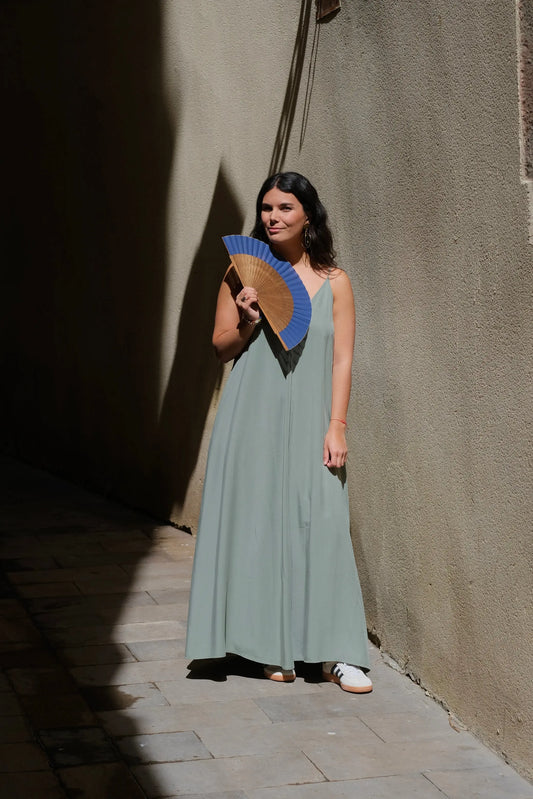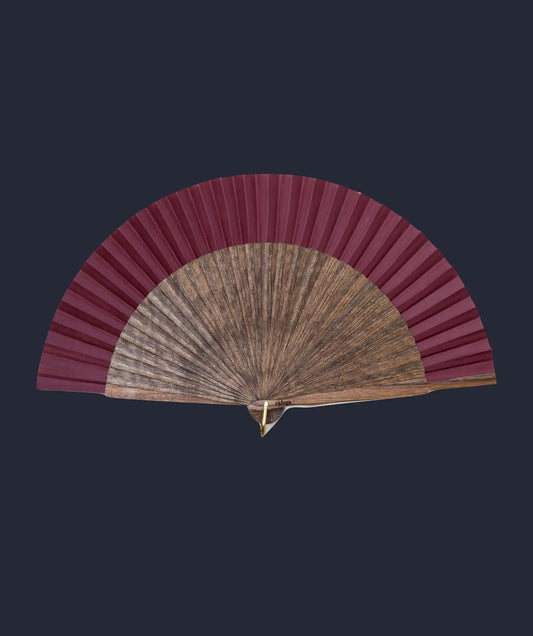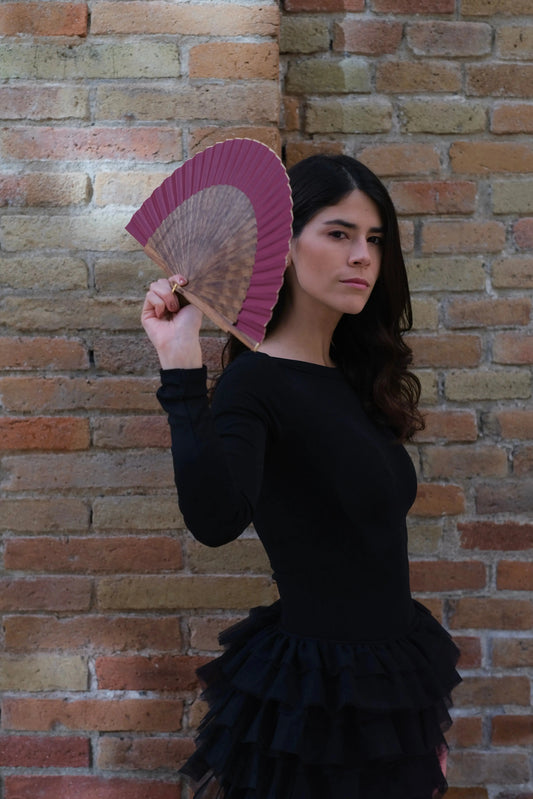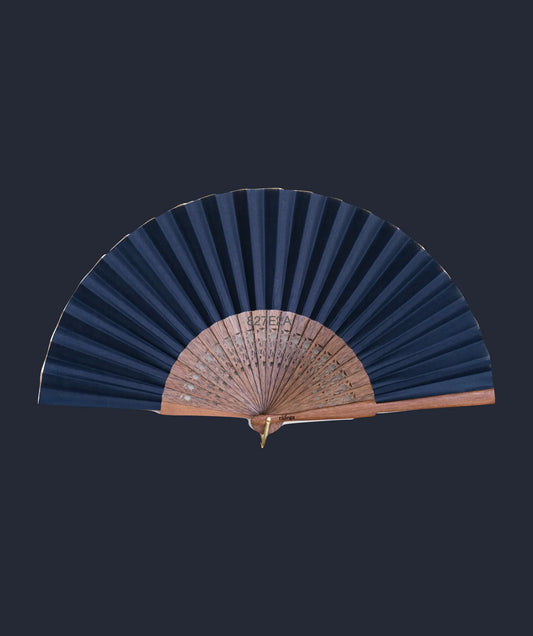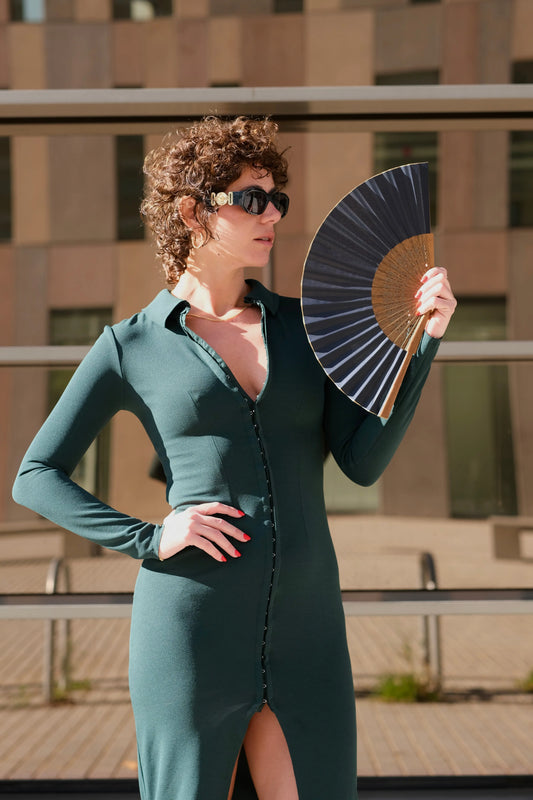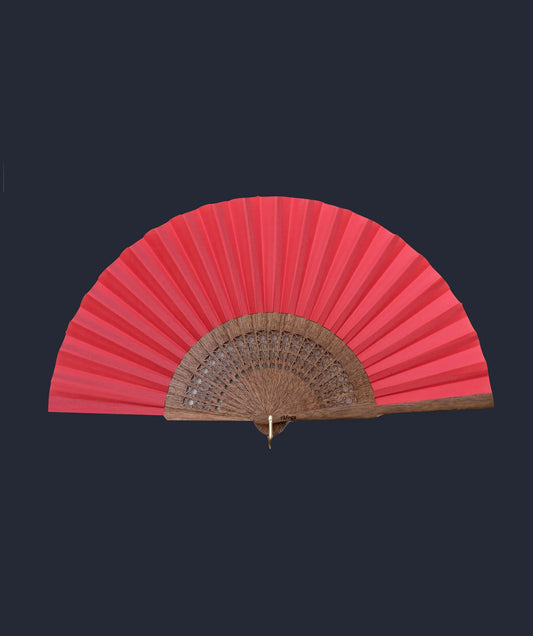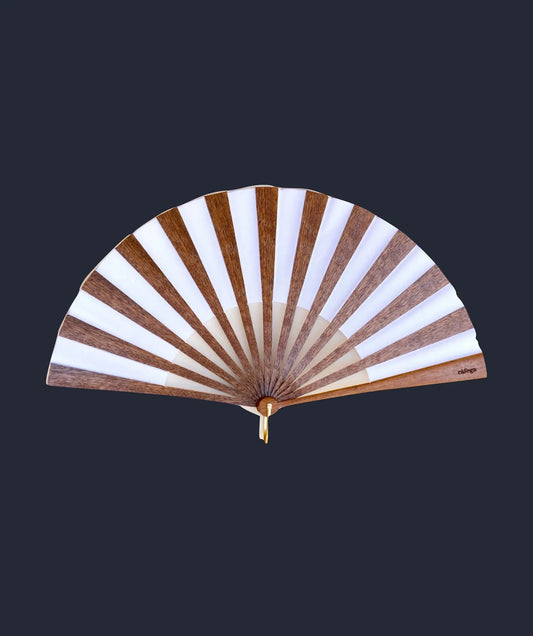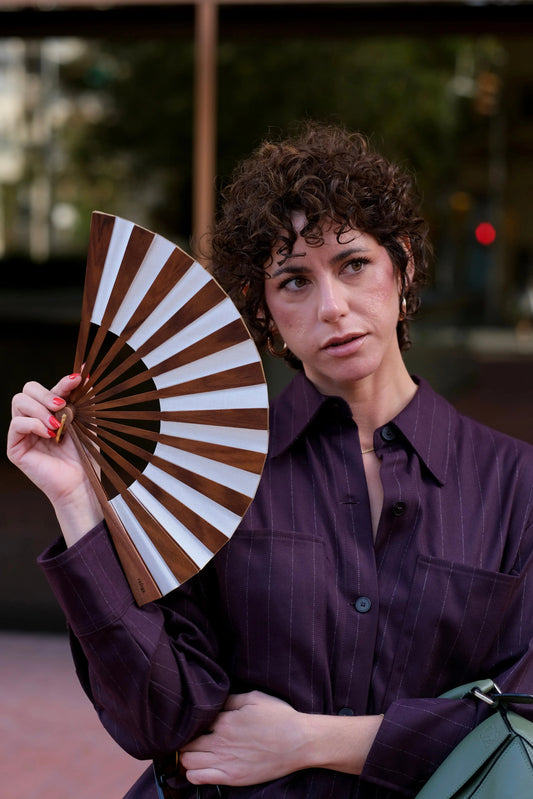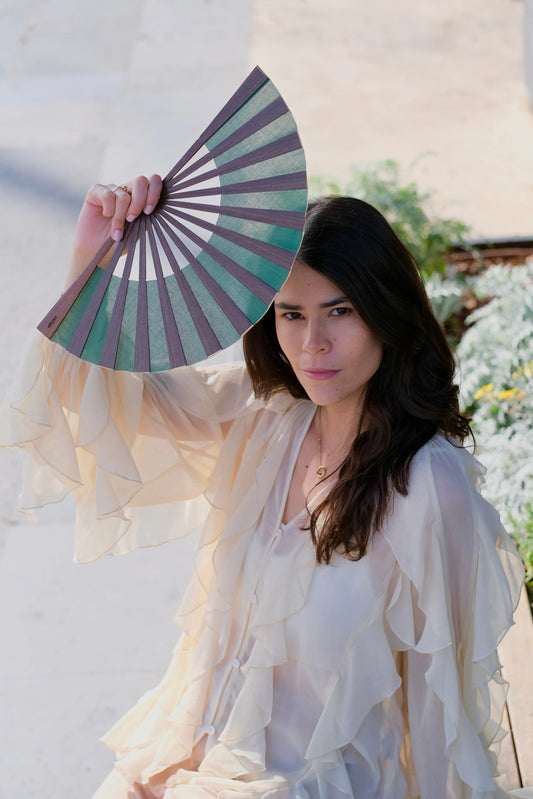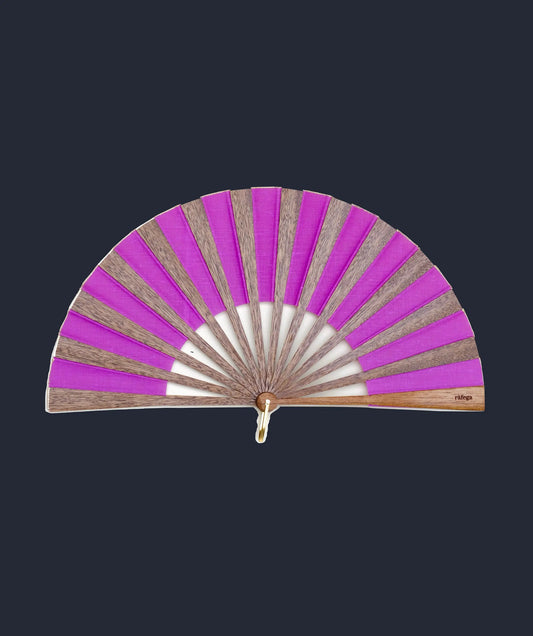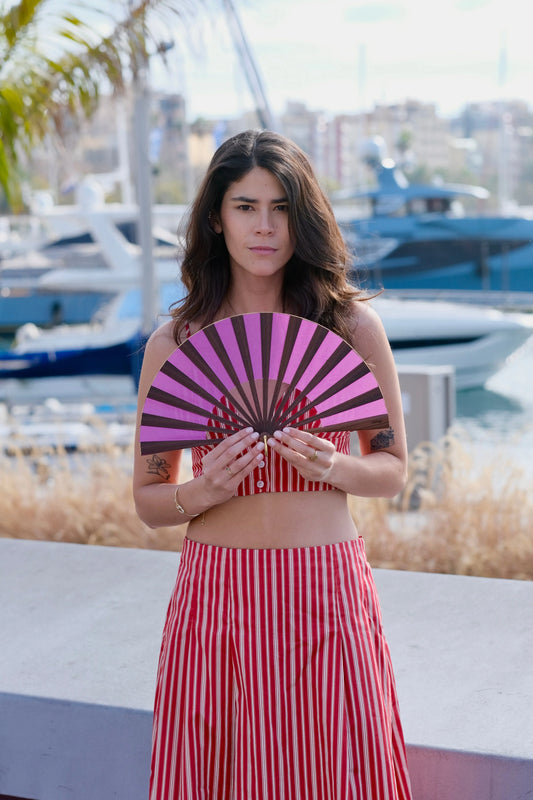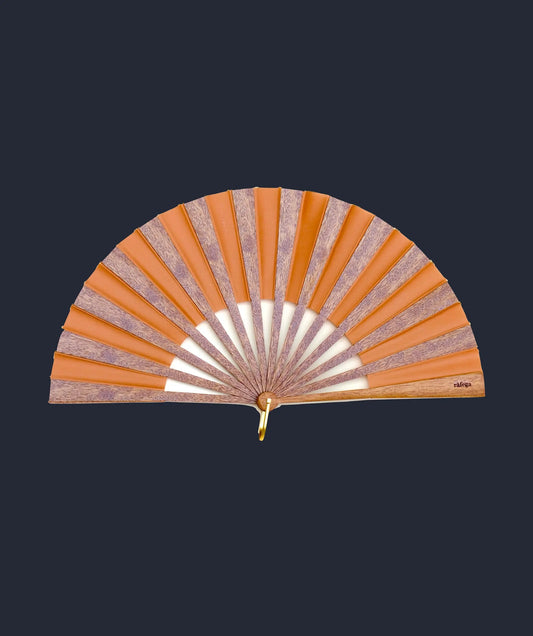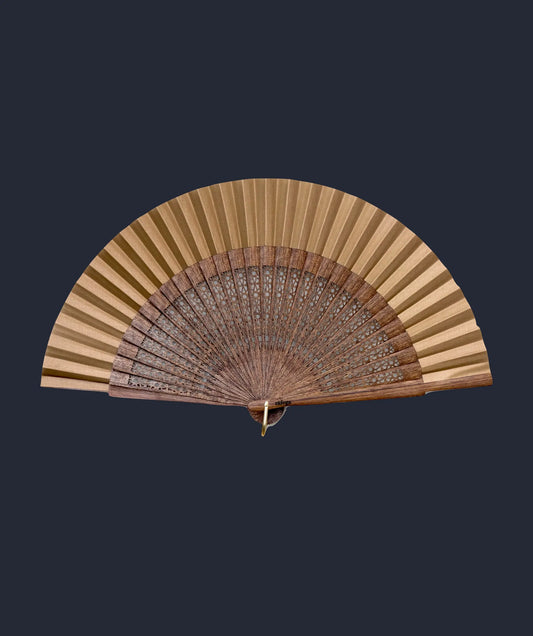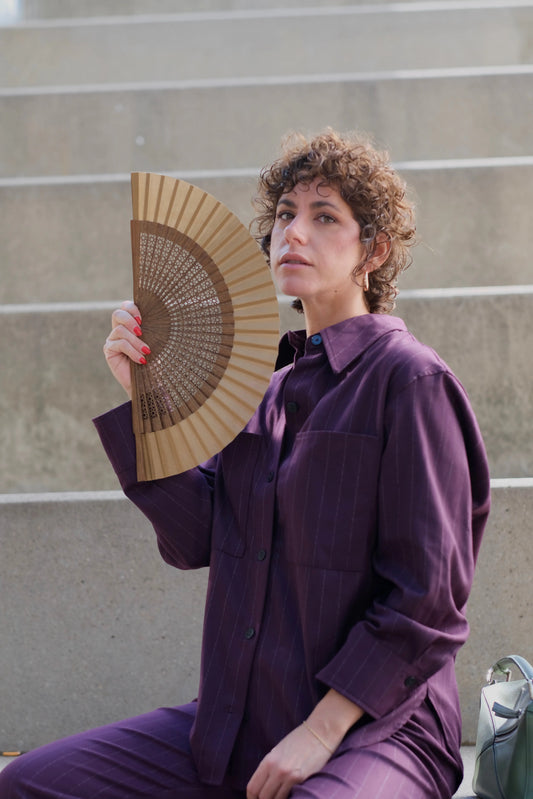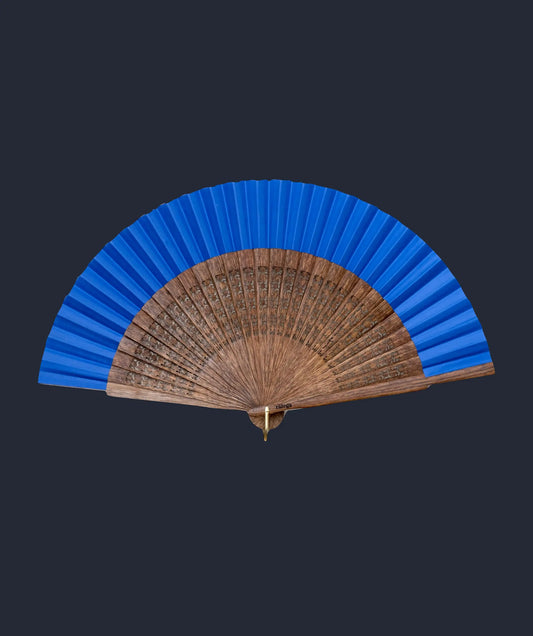When we think of a fan, most people imagine the classic folding fan made of wood and fabric. But the truth is that this object, with centuries of history, comes in many shapes, materials, and meanings. At ràfega, we specialize in handcrafted folding fans, 100% handmade, but we're passionate about everything related to the world of fans. That's why today we want to invite you to discover the different types of fans available.
Folding fan
It is, without a doubt, the most well-known and widely used fan. It consists of ribs held together by a cloth, paper, or lace—called "país" in the industry—that folds and unfolds in a semicircle.
At ràfega , we craft this model using mongoy wood ribs and 100% cotton fabric . It's the ideal everyday fan, especially in spring and summer, and also perfect for formal events, weddings, fairs, or as a fashion accessory.
There's also a mini version, perfect for carrying in your purse. Although smaller, it can be just as detailed. Our ràfega petitó is a prime example: compact, practical, and one of our favorites.
Fun fact: This type of fan became popular in Europe in the 16th century, especially in Spain. You can see our article on the history of the fan here.
Pericón
It's the XL version of the folding fan. Large, striking, and expressive, the pericón is a star in the world of flamenco and theater, where it accompanies dance with visual and aural power.
Although traditional, this fan has also conquered pop stages. Madonna, Beyoncé, and Lady Gaga have used it in their choreography for its dramatic impact. A perfect example of how tradition can shine in the contemporary.
Pai pai or rigid fan
Unlike the folding type, this type doesn't close. It's round or oval in shape, with a fixed screen mounted on a handle, usually made of wood, sandalwood, plastic, or bamboo. It's very common in Asian countries like Japan and China, and is increasingly popular in Europe.
It is often decorated with landscapes, calligraphy, or floral motifs, and is used in both weddings and advertising events, due to its practicality and visual surface.
Brisé fan
This style consists solely of flat rods joined at the top by a ribbon, without fabric. It is highly decorative and enjoyed great popularity in the 18th century.
It was made from materials such as ivory, mother-of-pearl, or tortoiseshell, and carved with openwork details of floral or plant motifs. Today, it is a true collector's item and a symbol of refinement.
Lace fan
A Spanish classic. It's a folding fan made of lace, often hand-embroidered. It's traditionally used at weddings, elegant parties, or as part of traditional costumes.
Its beauty and delicacy make it a highly valued piece of craftsmanship, which in many families is passed down from generation to generation.
Paper fan
You've probably seen one at a festival or as a promotional gift. Made with decorated paper and simple sticks, they're lightweight, inexpensive, and functional.
They're ideal for large events, advertising campaigns, or children's activities, even as a craft to do at home with children. Simple, yet effective.
The fan has many forms and functions. It can be elegant, practical, ceremonial, or even stage-ready. At ràfega , we strive to preserve the tradition of the handcrafted folding fan, but we celebrate the diversity of styles that have made this object so universal. Because a fan isn't just for giving air: it's history, identity, culture, and above all, a form of expression.

